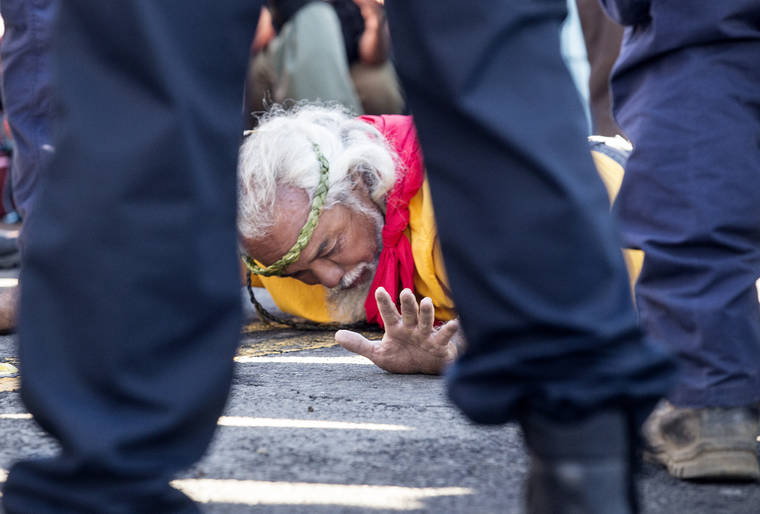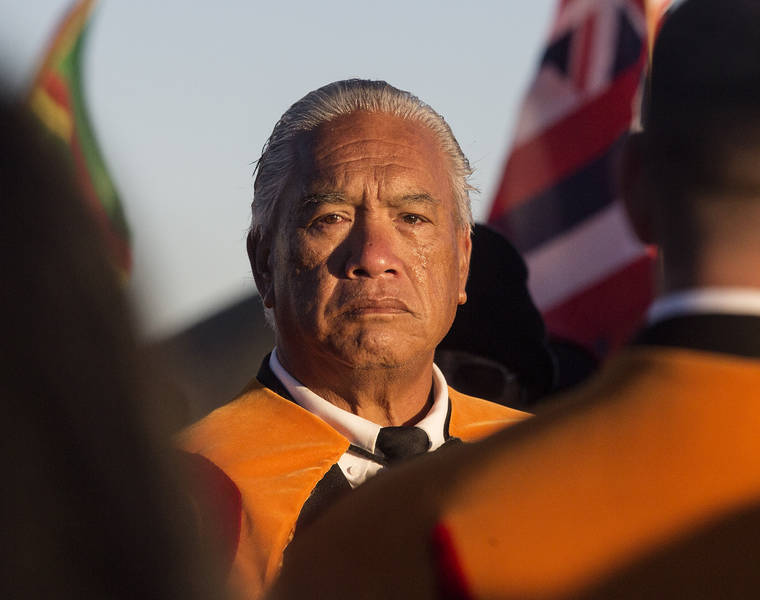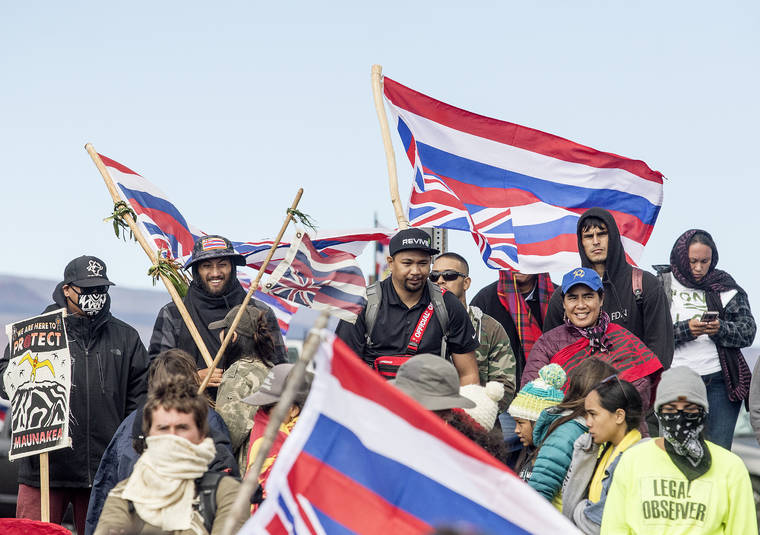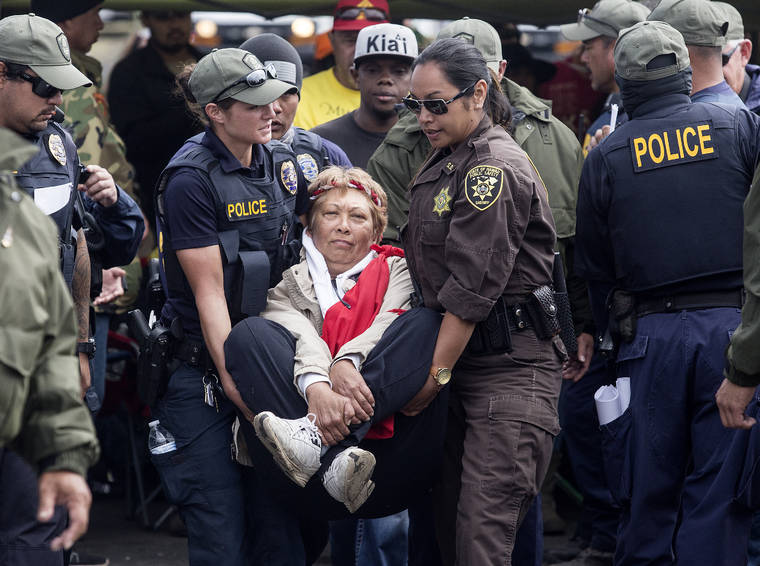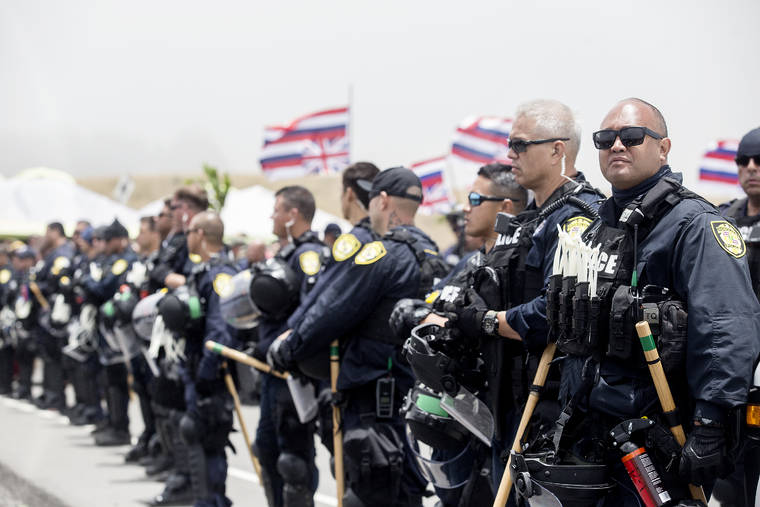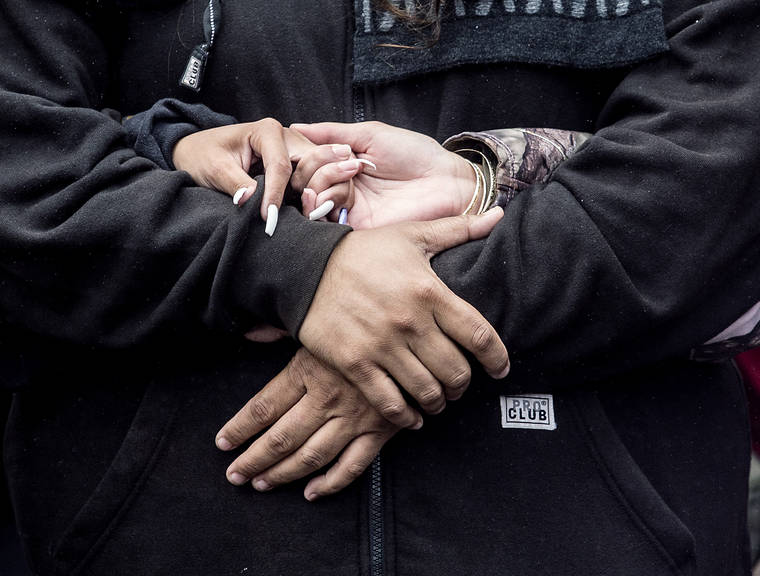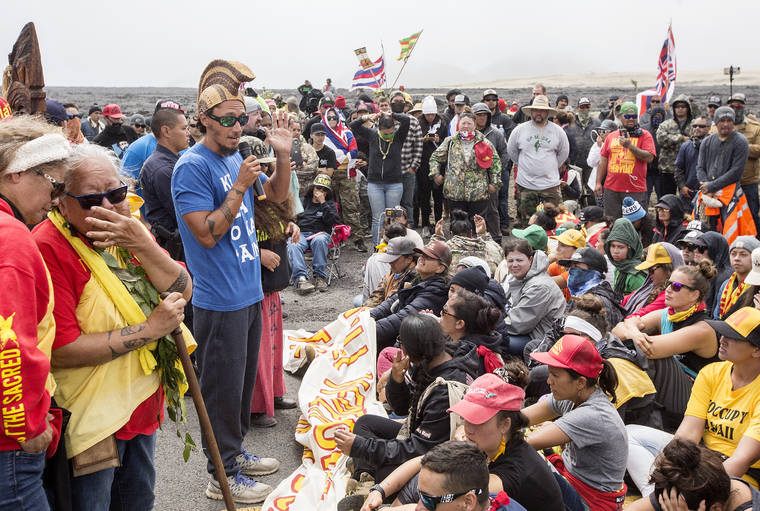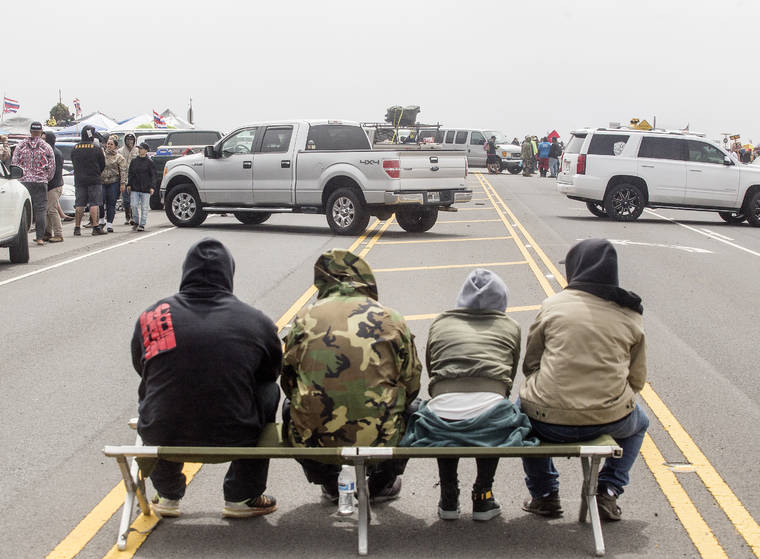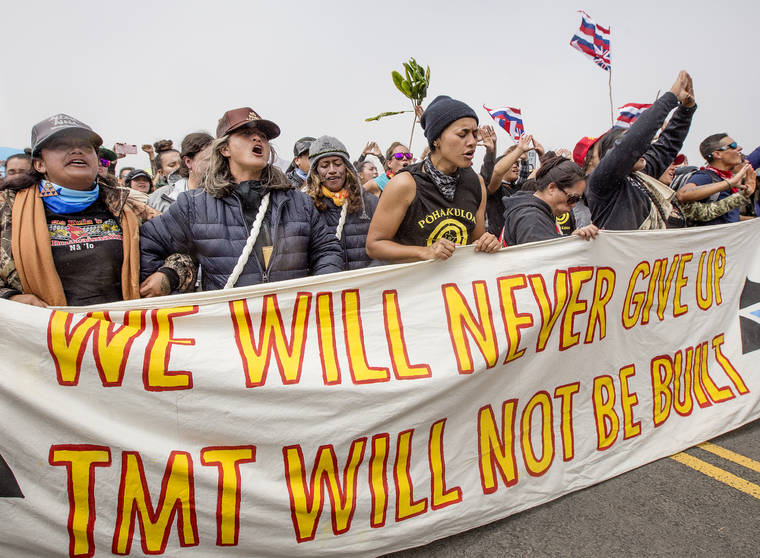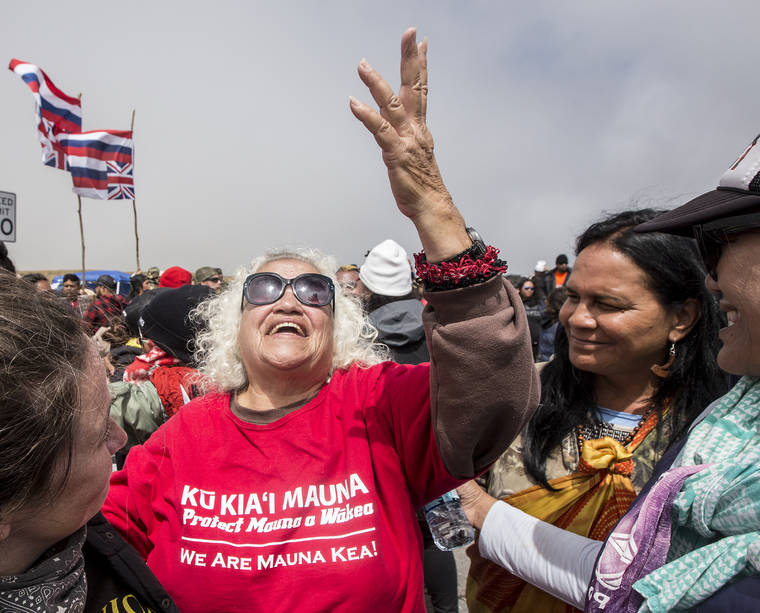Thirty-three opponents of the Thirty Meter Telescope were arrested Wednesday on the Maunakea Access Road during an ongoing protest that prompted Gov. David Ige to sign an emergency proclamation.
Ige said the statewide proclamation gives law enforcement increased authority to close more areas and restrict access around Maunakea in order to deal with the protesters, which numbered more than 1,000 by Wednesday afternoon.
“Since Monday, protesters have illegally occupied roads and highways,” Ige said. “We are committed to keep a safe situation. Law enforcement has been extraordinarily patient and respectful towards protesters. However, even though law enforcement has done everything it can to talk and reason with protesters, the protesters have continued to break the law and place the safety of the public at risk.”
While Tuesday ended with police and protesters — who call themselves kia‘i, or protectors, of Maunakea, which they consider sacred — on somewhat amiable terms, tensions were high early Wednesday after protesters heard of plans by police to clear the access road for construction equipment.
Protesters already were on edge after a false alarm Tuesday night. At about midnight, the they heard a false report of approaching police, leading the protesters to form up on the access road. While that proved unnecessary, protester Lakea Trask said it was “actually a great exercise for us.”
“I guess it was meant to be,” Trask said. “It eased a lot of our tension, and we proved that we knew what to do.”
When it appeared certain that police would make arrests Wednesday morning, the protesters went into formation. The plan was the same as that on Tuesday, said protest leader Pua Case: to allow a line of kupuna, or elders, to sit in the way of the police and be arrested first.
Fellow protest leader Kahookahi Kanuha added that after the kupuna were arrested, any other protester willing to be arrested would be allowed to make their stand as they saw fit, although he stressed that all protesters must maintain Kapu Aloha, an entreaty by cultural practitioners to only act with love and kindness.
When officers arrived Wednesday morning, protesters cleared the road as requested. One by one, officers apprehended the kupuna — many of whom prostrated themselves and refused to move without being carried — and brought them to waiting vans.
The arrest process was laboriously slow, stopping entirely on multiple occasions while police brought a new vehicle into place or for the remaining kupuna to use the restroom. While Case attempted to maintain silence among the protesters out of respect for the kupuna, many broke out into song, chants or tears.
Dan Dennison, spokesman for the state Department of Land and Natural Resources, later said four kupuna were transported away by ambulance at their request, in order to be treated for minor health issues.
Dennison said the kupuna were given a choice to receive a citation and be released, or be taken to the Hilo cellblock to be processed. All chose the former option, he said, and many returned to the access road a short while later — with some, in fact, reoccupying seats they vacated only moments before.
The 33 kupuna who were arrested were charged with obstructing a government operation, a misdemeanor offense.
Before all the kupuna could be arrested — a more daunting task than it appeared, as other kupuna replaced those who were arrested — dozens of additional police arrived, equipped with riot helmets, batons and pepper spray. This prompted protesters to form a human wall in front of the kupuna, linking arms and refusing to move.
The stalemate lasted for approximately three hours, with impassive officers lining the roadway and protesters refusing to move from their checkpoint.
Protesters sang and chanted in unison; some even offered their adversaries food and water. The officers did not react, but periodically one would address the crowd, telling them that as long as protesters did not interfere and remained off the road the police would not stop them.
Throughout the standoff, protesters not among the human wall looked on in apprehension. One protester, Alapai Kaulio, said all he could do was hope that his fellows would maintain Kapu Aloha.
“We’re just going to watch,” said protester John Leslie. “We’ll take videos, too. The whole world is watching.”
At some point during the day, some protesters parked vehicles on Daniel K. Inouye Highway, blocking traffic. While the purpose of the vehicles was to impede police vehicles and TMT construction equipment that reportedly was moving toward the access road, the state Department of Transportation closed the highway to all traffic shortly after 11 a.m.
It was that closure that ended the stalemate Wednesday.
Shortly after 2 p.m., Kanuha announced that police agreed to withdraw their officers if protesters removed their vehicles from the highway. The protesters enthusiastically agreed, the cars were moved and the officers wordlessly returned to their vehicles and left, followed by the whoops and cheers of the crowd.
“Looks like we’re 3-0!” cheered Jamaica Osorio, a University of Hawaii professor who on Monday secured herself to a cattle guard on the access road in protest of TMT.
Once again, Kanuha acknowledged that the conflict is far from over. Unlike on Tuesday, the police offered no assurances that they would not return later that day, and so the protesters remained at their stations. However, as news of protests on other islands began to spread, Kanuha was optimistic.
“Imagine if we were one island; we’d have thousands of people here now!” Kanuha said. “With each pohaku we pile up, we make our wall stronger.”
During the standoff, protesters on Oahu stood in solidarity with the TMT protesters on the H-1 freeway in Honolulu, causing a traffic backup.
“The revolution is growing,” Osorio said. “Together we can make this change.”
A statement by the Office of Hawaiian Affairs lamented the events on the mountain.
“The Native Hawaiian community weeps today,” the statement read. “To see some of our most respected kupuna, advocates and ‘ohana get arrested for voicing the same concerns our community has expressed for decades over the state’s mismanagement of Maunakea brings a kaumaha (heaviness) to our hearts that is unbearable. Regardless of your position on TMT, we must all agree with Gov. Ige’s 2015 statement that the state has ‘failed’ Maunakea.”
Two trustees of the office were reportedly at the protest, and one was among the arrested kupuna.
Reporter John Burnett contributed to this report.
Email Michael Brestovansky at mbrestovansky@hawaiitribune-herald.com.











